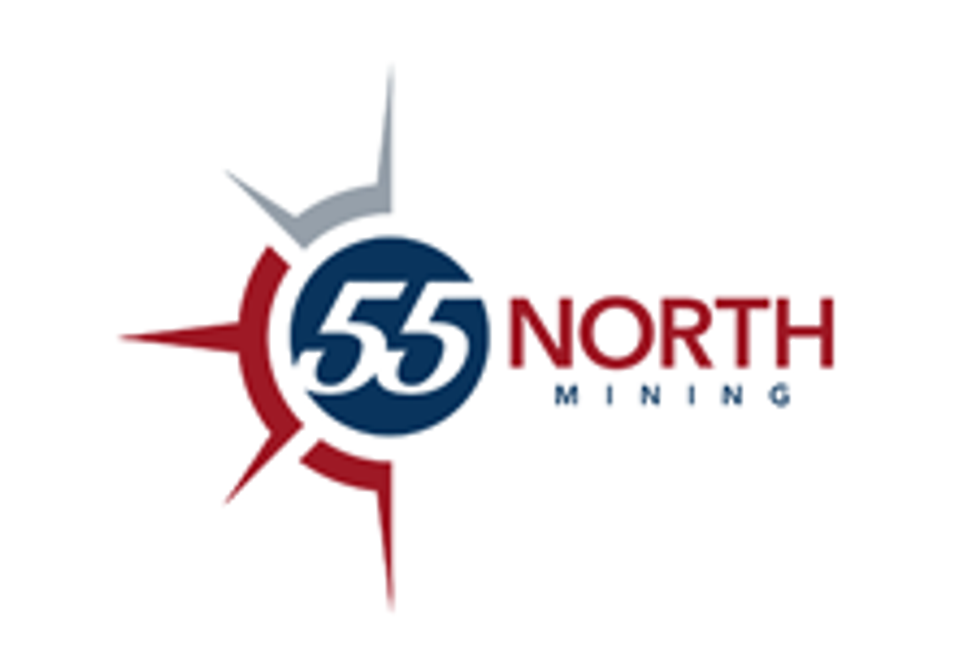Comstock Mining: Rich History, Even Brighter Future
Comstock Mining is clearly proud of the rich history surrounding its Nevada properties, but beyond that, the company has worked hard to advance to production in just a few years. Gold Investing News spoke with Comstock’s president and CEO, Corrado De Gasperis, about how Comstock got to where it is today, what’s been happening lately and what investors can expect next.
But history isn’t Comstock’s only claim to fame — the company has worked quickly and efficiently to consolidate land and historic data in the area, secure permits, build a mine and move into production in just a few years.
Comstock was also granted a substantial, unprecedented permit expansion in early September, increasing its permitted land holdings by roughly seven times. The company is now expanding its mine plans and ramping up production while continuing to reduce costs.
To find out a bit more about the company, Gold Investing News (GIN) spoke with Comstock’s president and CEO, Corrado De Gasperis, about how Comstock got to where it is today, what’s been happening lately and what investors can expect next.
GIN: Comstock seems unique, especially in terms of how it came to be. Can you describe the company’s history and what sets it apart from other gold miners?
CDG: Absolutely. The Comstock lode district is profoundly historic in that over 400 companies were once involved in a booming mining supply chain, with over 230 mills operating in the district. The area produced almost 200 million ounces of silver and over 8 million ounces of gold in the late 1800s and early 1900s. It was cosmopolitan in a very big way, with the establishment of Virginia City, Silver City and Gold Hill. Nevada and the Comstock played a meaningful role in the Union winning the Civil War, and that facilitated statehood for the Nevada territory.
The boom turned to bust when the old timers stopped mining, and because the claims were so fragmented it was difficult for modern techniques to get traction. There has been some form of mining on the Comstock lode every decade since then, but it wasn’t until we started consolidating the claims in the district that a true, sustainable return to modern mining proved possible.
Since 2003, we have consolidated over 8,000 acres of land, all under one company, representing over 10 square miles. I think that’s what’s most unique — that we are the first company to truly consolidate substantially all of the Comstock under one roof.
Coincidently, we started consolidating all of the available historic data. There’s been so much history and so much previous activity, but it was never effectively consolidated or coordinated. We were able to build on that, combining the history with additional modern techniques like geophysical data analysis, metallurgical analysis, current surface mapping data and prior drill data all into one three-dimensional, geostatistical model. Those efforts resulted in a significantly longer definition of the district, at least for the mineralized strike, from over to 2 miles to almost 6 miles in length, and ultimately, to new discoveries in the center and the southern parts of the district.
GIN: It seems like Comstock has advanced from explorer to producer in just a few short years. How was the company able to advance its Nevada projects so quickly?
CDG: Our development really occurred in three stages. The first one was our land and data consolidation, from 2003 to 2009, when we felt like we had enough context to commence drilling. I would consider drilling the second stage of development, from 2010 to 2012.
After that, it was almost an overnight success. Two to three years of drilling has validated over 3 million gold equivalent ounces, representing about 2.7 million ounces gold in all resource categories and almost 27 million ounces of silver in all resource categories. We consistently average about 10 ounces of silver for every ounce of gold resource.
The strength of that geological model and the geological controls, from the top to the bottom, supported by both historic and current data, helped us tremendously. And most of the gold and silver resources we discovered only represent a tiny fraction of our land position, with about 2.5 million gold equivalent ounces represented by the Lucerne Resource area and another 0.5 million gold equivalent ounces represented by the Dayton Resource area. These are two of our seven target areas resident along that strike.
Once we felt we had sufficient ounces defined, at least in that central area, we began applying for and upgrading our permitting needs, all of which are on private land. This enabled us to go back into production before the end of 2012, with 2013 representing our first full year of production. We are now well positioned to grow from that initial level of production.
The fact that all of our mining is on private land facilitated a faster start up. We do also have federal lands, and once mining on those lands becomes foreseeable, we’ll start to move towards the federal permitting process.
GIN: Comstock received a landmark permit expansion to expand its mining and processing capabilities and to extend the permit boundaries for the Comstock project in September. Can you elaborate on the importance of this permit and how the expanded boundary can add to the company’s already substantial gold ounces?
CDG: Yes, it’s so very critical. It really is a landmark expansion for us because our existing permit only allowed us to mine in a very, very small, confined starter mine. We had a strong covenant with Storey County, Nevada to first demonstrate that we could be responsible, demonstrate responsible mining practices and complete concurrent reclamations in order to earn that “social license” to expand. We have gone beyond that with some incredible historical restorations too.
The landmark permit boundary expansion takes us from essentially about 180 acres of permitted area to a mining and processing boundary of about 1,200 acres.
The expansion now encompasses all of the quantified gold and silver resources in the Lucerne Resource area and it also expands all of the private lands that we have in the American Flat processing area, truly expanding the boundary of the entire area almost seven fold. I really cannot imagine anything more important to us. It’s absolutely huge.
GIN: And how has jurisdiction played into the company’s success over the years?
CDG: I do not believe that there’s a better place to be working or mining than Nevada. Nevada is pro-responsible business; diligent, thorough and protective of the environment. The state and counties are not maverick at all. They’re very caring about the land and the territory, but they’re also very caring about economic development, sustainability and jobs.
Specifically, we’re in Storey and Lyon counties in Nevada. The area most recently welcomed Tesla Motors (NASDAQ:TSLA), and continues to have success with companies like Toys “R” Us and Walmart and Amazon (NASDAQ:AMZN). Being located there really puts us in partnership with localities focused on responsible, sustainable economic growth.
GIN: Comstock recently released its third-quarter results, which show significantly reduced losses in a year-over-year comparison, as well as a substantial reduction of the company’s debt. How was Comstock able to achieve that?
CDG: We’ve progressed to the point where our mine plans are more mature and much more reliable. We have much less variation from plan when mining our resource. Everything has become very stable, and those stabilities and reductions in variation from our plan have allowed us to significantly streamline the operation and significantly improve our cost profile.
Even though our revenue has been relatively stable, our costs are down dramatically, and so now we’re starting to increase our revenue and increase our ounces poured going forward while spending less. Right now, we’re at the point of profitability and we’re very excited about growing that profitability.
GIN: And how are exploration efforts progressing at the Lucerne Resource area and at Comstock’s other properties in the Comstock District?
GDC: We had a huge focus from 2010 to 2012 on drilling, exploration and development, and after that we paused on resource development and shifted to production.
We’re very much looking forward to drilling again – by the end of this month – in order to expand the Lucerne area for mining. We also want to develop the southern extensions, like Dayton and Spring Valley, and really accelerate development toward a second mining operation.
Even though we had to pause to get our operations up and running and stabilized, we’re now ready to start drilling again, and it’s very exciting for us.
GIN: Comstock seems to be doing everything right. The company has gotten into production quickly, focused on reducing debt and strengthening its balance sheet and is expanding its exploration upside. However, the company’s stock has experienced some modest losses year to date. Do you think that the company’s stock is undervalued? If so, why?
GDC: I do think it’s undervalued, if for no other reason than because of the huge geological potential that we have. We’re only operating at a small percentage of our capacity, and we’ve only drilled and developed a tiny fraction of our mineralized resource area. Considering what we own, what we have proven in terms of grades, yields and costs, what is already permitted and operating, plus the tremendous potential to grow all of that, I do think we’re undervalued.
I also believe the market is fearful about the direction of gold prices, but that seems to be resolving itself. Gold has been resilient around $1200, and I believe that mining companies with hard assets, lower cost structures and real growth potential are the safest, best place to be in this kind of environment. We feel that describes us and that we are very well positioned to grow value from here.
GIN: What catalysts does Comstock have on the horizon?
CDG: I would say we’ll continue to grow our program and expand our resource and mines. That’ll be here in the fourth quarter, and again in the first quarter. We will be updating our technical reports to show that expanded geology and our next technical report will most likely be coming out in the first quarter of next year.
We’ll also be expanding our development of the Dayton area next year, first to develop the resource and then to develop a second mine plan. Lastly, the work we’re doing to develop the Lucerne mine right now has identified some higher-grade zones, and we may also have a nearer-term potential to go underground and reach some of those higher grades. That would certainly complement our surface mining.
GIN: Just one more question – given the current state of the market, what do you think is most important for investors to consider when looking at gold companies?
CDG: I think what’s most important to look at is the land position, the resource that exists in that land, the potential for a greater resource and ultimately the ability to extract that resource at a relatively low cost.
GIN: That’s very concise. Thank you for taking the time to speak about Comstock today.
CDG: Thank you.
Securities Disclosure: I, Teresa Matich, hold no direct investment interest in any company mentioned in this article.
Editorial Disclosure: Interviews conducted by the Investing News Network are edited for clarity. The Investing News Network does not guarantee the accuracy or thoroughness of the information reported. The opinions expressed in these interviews do not reflect the opinions of the Investing News Network and do not constitute investment advice. All readers are encouraged to perform their own due diligence.
Related reading:





